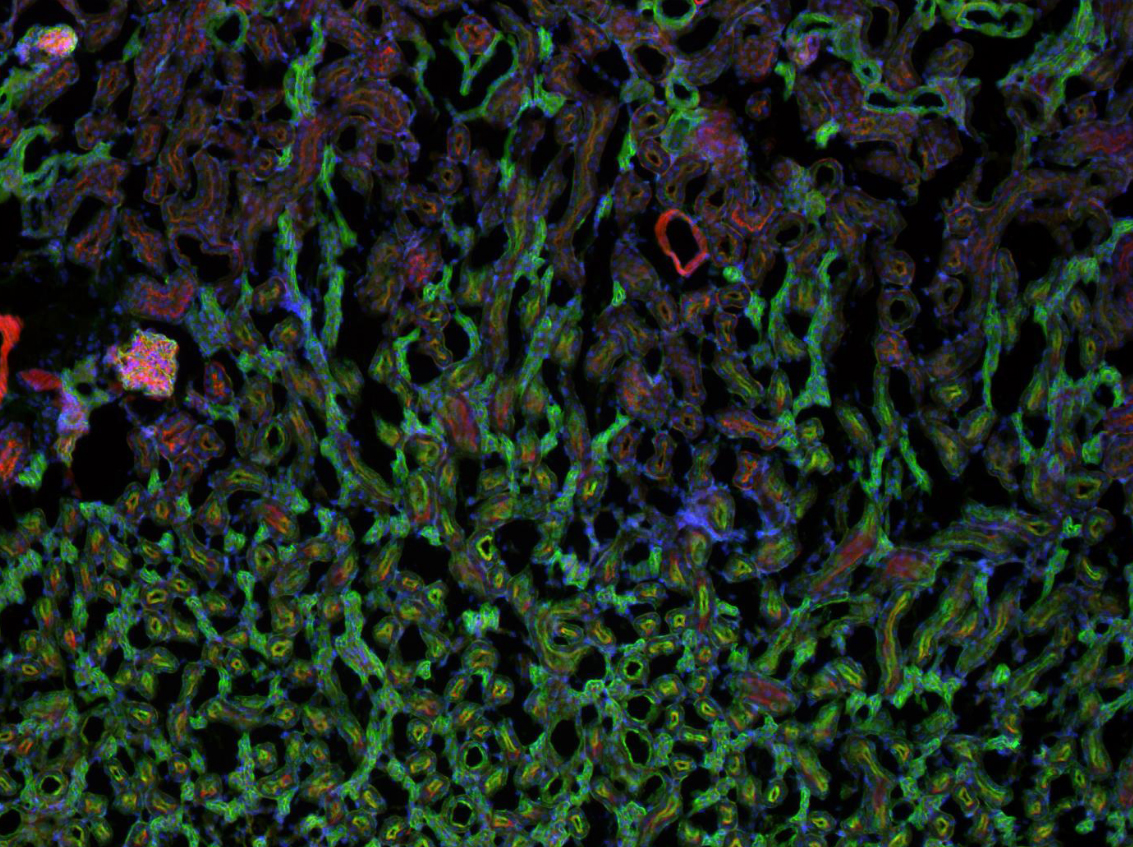Fluorescence microscopy is a specialised branch of microscopy that allows the observer to tag different elements of a specimen with proteins that will fluoresce under various wavelengths of light. The emitted fluorescent light from the specimen can be quite faint and is sometimes very difficult to see. The camera used to image the low emission target needs to be highly sensitive in order to detect the fluorescing light. It should also have minimal noise to ensure accuracy above the noise floor and offer the highest signal-to-noise ratio possible.
Quantum efficiency (QE) is a measure of the camera’s ability to capture light and convert it into a signal. This is a calculated ratio between the number of photons that strike the sensor and the resulting electrons. The term “Peak QE” is often referred to when comparing sensors and refers to the maximum QE value. Since quantum efficiency is a function of wavelength, looking only at peak QE is not the most important specification to evaluate when looking for a camera to capture fluorescence microscopy images. For example, when using dyes that emit in the 650 nm to 800 nm range, such as Alexa Fluor 680 or Cy5.5, it is important to note that a sensor’s peak QE might typically be found around 500 nm, while being significantly lower with longer wavelengths. This is why it is important to consider the QE over the wavelength region of interest.
Noise is another characteristic of the camera that must be closely considered when selecting a camera for fluorescence microscopy. If the noise floor is too high, then it will be difficult to resolve low-light signals against the background noise. Two forms of noise are of particular interest in this domain: read noise and dark current noise. Read noise can be generated at several points in the imager and camera. Read noise is defined as the total random temporal noise contributed by the imager and camera electronics (in e-). Dark current noise is a noise due to thermally dependent sources. It is measured in units of e-/sec, and so, is dependent upon the exposure time and temperature. Because fluorescence is rather dim and doesn’t emit much light, longer exposure times are often used to allow more light to collect on the image sensor. It is in these cases that dark current noise can play a role in reducing the dynamic range of the camera. A solution to this thermally induced dark current noise is often to actively cool the image sensor. However, it is important to note, as outlined in a previous article, that some fluorescence applications do not require active cooling as the signal-to-noise ratio is high enough to capture the information required over the exposure times used for the image capture.
For instance, Lumenera’s new INFINITY3S-1UR, has an impressive dark current noise of less than 1 e-/s at 22°C, without being a cooled camera. Coupled with a read noise of less than 6 electrons and a high peak quantum efficiency of 71% for the monochrome variant, it is a very attractive choice for those looking for a microscope camera capable of offering high quality images. The INFINITY3S-1UR’s high QE and low noise translate to an impressive dynamic range of 70 dB, making it an ideal camera for low-light imaging. It is also offered in a color variant with a Peak QE of 57% and both models are capable of producing 14 bit images, suitable for research and medical applications. Its USB 3.0 interface is able to support the camera’s frame rate of 45 fps for color and 60 fps for the monochrome version. Whether you’re looking to do fluorescence or other low light applications, the INFINITY3S-1UR is an excellent camera to capture research grade images with exceptional detail.


